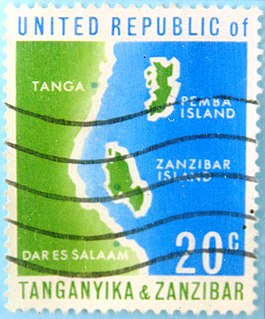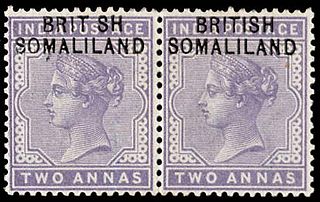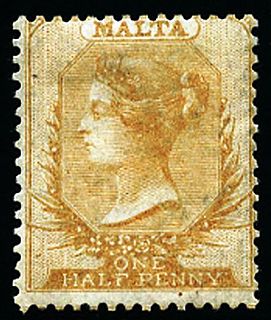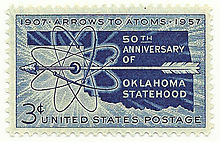
This is a survey of the postage stamps and postal history of the Falkland Islands.

The story of the postage stamps and postal history of Tanzania begins with German East Africa, which was occupied by British forces during World War I. After the war, the territory came under British rule, was named Tanganyika and issued stamps under that name until after a union with Zanzibar in 1964.

This is an overview of the postage stamps and postal history of Australia.

This is a survey of the postage stamps and postal history of Bahawalpur.
This is a survey of the postage stamps and postal history of Bechuanaland Protectorate.

The postal history of Portuguese India goes back to the earlier days of the colony. The postal history begins with communication between the Viceroy and the Court at Lisbon soon after the conquest of Old Goa by Afonso de Albuquerque in 1510. Letters, written in triplicate, were carried by separate ships because of the hazards of the voyage. Mail was carried by an overland route, as well. The early communications of Portuguese India had an official character and the correspondence is now to be found in museums and governmental and ecclesiastical archives.

Originally mail from British Somaliland used postage stamps of Egypt, then India. In 1903, about 30 types of stamps of India were overprinted "BRITISH / SOMALILAND".

A revenue stamp, tax stamp, duty stamp or fiscal stamp is a (usually) adhesive label used to collect taxes or fees on documents, tobacco, alcoholic drinks, drugs and medicines, playing cards, hunting licenses, firearm registration, and many other things. Typically, businesses purchase the stamps from the government, and attach them to taxed items as part of putting the items on sale, or in the case of documents, as part of filling out the form.
The United States Postal Service's Citizens' Stamp Advisory Committee (CSAC) evaluates potential subjects for U.S. postage stamps and reports its recommendations to the Postmaster General, who makes the final decision.

The postal history of the Bahamas begins in the 18th century, with the first post office operating since 1733. The earliest known letters date from 1802. In 1804 a straight-line "BAHAMAS" handstamp came into use. The Royal Mail Line initiated a regular mail service in 1841, and from 1846 used a "Crown Paid" handstamp along with a dated postmark for New Providence.

Postage stamps and postal history of the Canal Zone is a subject that covers the postal system, postage stamps used and mail sent to and from the Panama Canal Zone from 1904 up until October 1978, after the United States relinquished its authority of the Zone in compliance with the treaty it reached with Panama.

The early issues from 1853 had the monarch's head, white and featureless, embossed on a coloured background. The most valuable stamps from this period are Gibbons catalogue nos 8 and 9 from the 1853 issue: the 100 reis lilacs.

Bulgaria liberated itself from the Ottoman Empire in 1878 and, although it remained de jure autonomous until the proclamation of full independence in 1908, it acted as a de facto independent country. From 1879, stamps were issued in Bulgarian Cyrillic script and some of the stamps—such as those issued in 1901—commemorated the 25th anniversary of the April Uprising against the Turks and, in 1902, celebrated the 25th anniversary of the Battle of Shipka. Bulgaria become a de jure independent state in 1908, even though early stamps issued in the 1910s still depicted Tsar Ferdinand and Tsar Boris III.

The story of Japan's postal system with its postage stamps and related postal history goes back centuries. The country's first modern postal service got started in 1871, with mail professionally travelling between Kyoto and Tokyo as well as the latter city and Osaka. This took place in the midst of the rapid industrialization and social reorganization that the Meiji period symbolized in Japanese history. Given how the nation's railroad technology was in its infancy, Japan's growing postal system relied heavily on human-powered transport, including rickshaws, as well as horse-drawn methods of delivery. For example, while commemorating the 50th anniversary of Japan's postal service, the country's 1921 government released decorative postcards depicting intrepid horseback riders carrying the mail. This however was done to compare postal transport in past and present, as the other card showed modern transportation viz. rail and shipping. The railroad net from the north to the south, Aomori to Nagasaki, was completed in 1889. Prior to 1920s, local delivery was mainly by men- and horsepower, not principally different to Europe.

Postage stamps and postal history of Singapore surveys postal history from Singapore and the postage stamps issued by that country and its various historical territories until the present day. Postal service in Singapore began with the delivery of stampless letters whose cost was borne by the receiving person, later encompassed pre-paid letters carried by private mail carriers and provisional post offices, and culminated in a system of universal prepayment that required all letters to bear nationally issued adhesive postage stamps. Singapore is an island country off maritime Southeast Asia, located between the Straits of Malacca and the South China Sea.

This is a survey of the postage stamps and postal history of Tristan da Cunha.

Presidents of the United States have frequently appeared on U.S. postage stamps since the mid-19th century. The United States Post Office Department released its first two postage stamps in 1847, featuring George Washington on one, and Benjamin Franklin on the other. The advent of presidents on postage stamps has been definitive to U.S. postage stamp design since the first issues were released and set the precedent that U.S. stamp designs would follow for many generations.

The Halfpenny Yellow is the first postage stamp issued by the Crown Colony of Malta. Depicting Queen Victoria, it was only valid for local postage and it was originally issued on 1 December 1860. It was the only stamp issued by Malta for two and a half decades, and during this period various reprints were made with differences in colour shade, perforation and watermark. When control of Malta's postal service was transferred to the islands' colonial government on 1 January 1885, the stamp was withdrawn and it was replaced by a set of definitive stamps.

Territories of the United States on stamps discusses commemorative postal issues devoted to lands that have been ceded to the nation or purchased by treaty in conjunction with both war and peace. Thirteen states have been created from colonial territories, two from independent republics, four from previous states in the Union, and an additional thirty-one from United States territories.

The history of Virginia through the colonial period on into contemporary times has been depicted and commemorated on postage stamps accounting for many important personalities, places and events involving the nation's history. Themes are particularly rich in early American and new nation history, historical landmarks, and Virginia-born presidents.


















